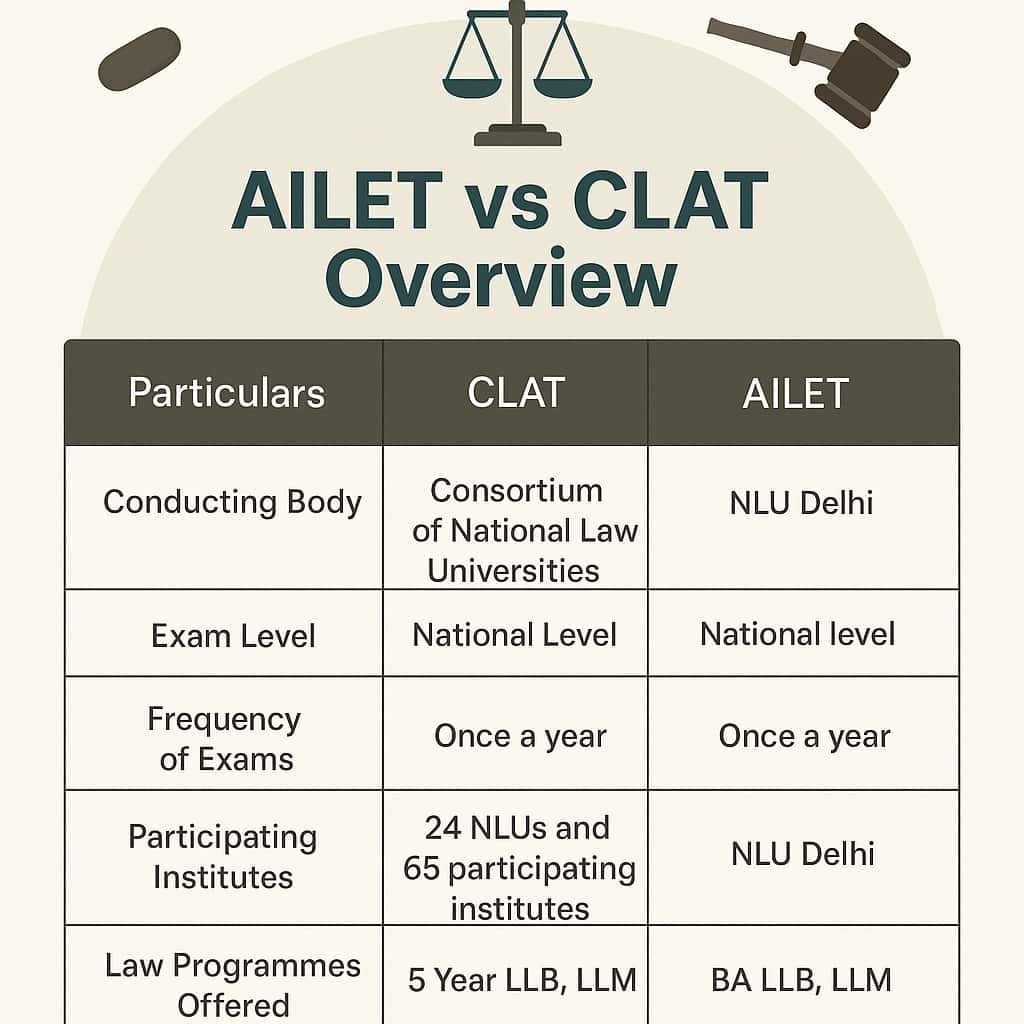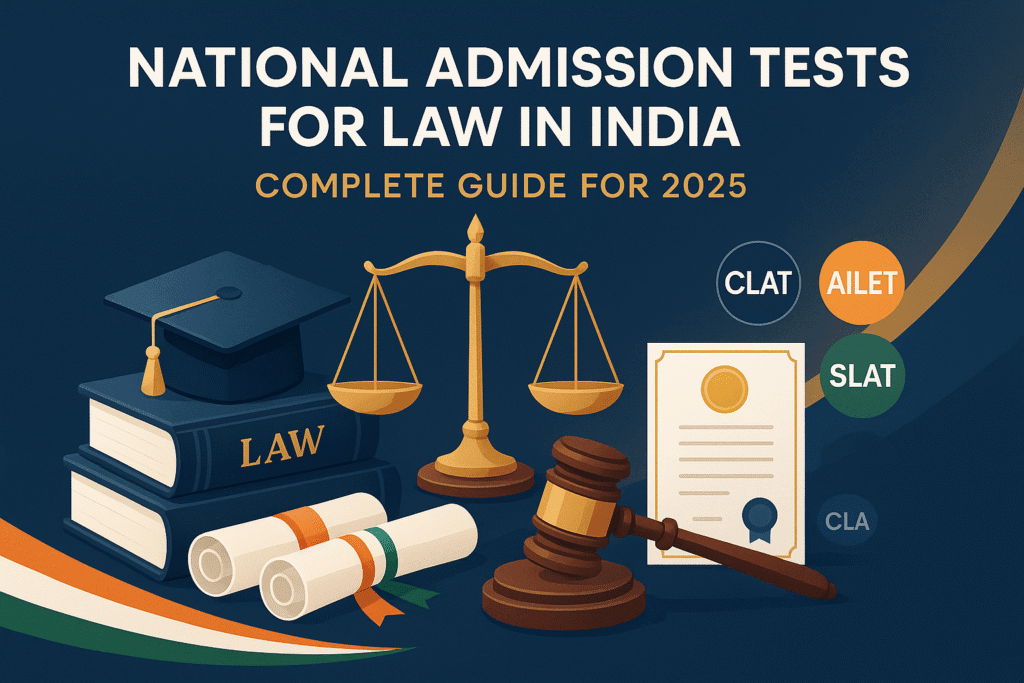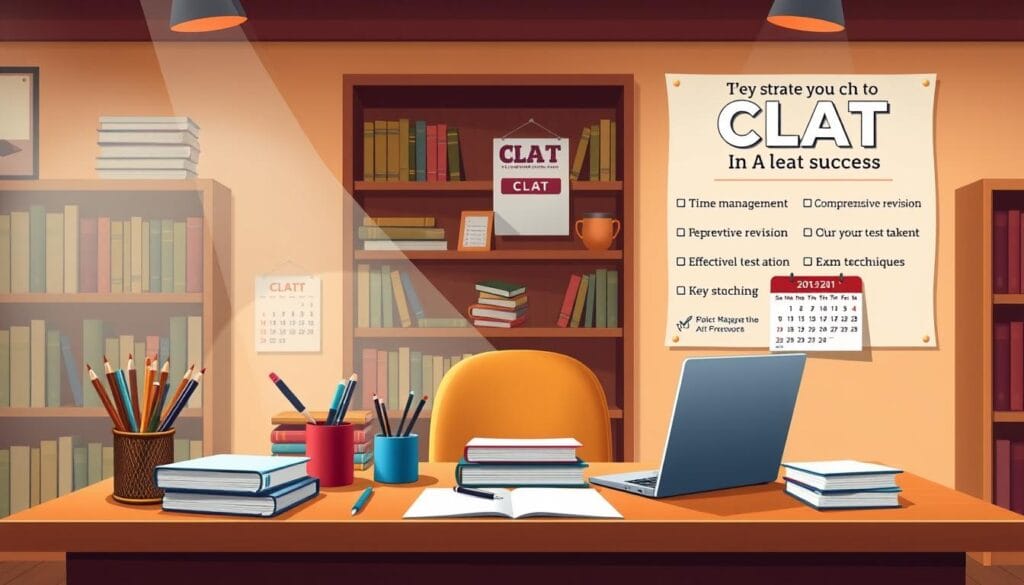Quick Navigation: This comprehensive guide covers all major law entrance exams in India for 2025, including CLAT, AILET, SLAT, MH CET Law, and state-level tests. Whether you’re a first-time aspirant or planning to retake an exam, this guide provides everything you need to make informed decisions and succeed in your law entrance journey.
Introduction: Navigating India’s Complex Law Entrance Landscape
The path to a successful legal career in India begins with choosing and clearing the right entrance examination. With over 75,000 students competing annually for approximately 25,000 law school seats across the country, the competition has never been more intense. The landscape became even more complex in 2025 with the official discontinuation of LSAT-India, forcing thousands of aspirants to reconsider their examination strategies.

This complete guide addresses the critical gap in available information by providing detailed analysis, strategic insights, and actionable advice that goes beyond basic exam details. We’ll explore not just what each exam covers, but how to strategically choose, prepare for, and succeed in the law entrance tests that align with your career goals and circumstances.
2025 Update: With LSAT-India’s discontinuation, CLAT has become even more competitive. New alternatives have emerged, and existing exams have modified their patterns. This guide reflects all the latest changes and provides updated strategies accordingly.
CLAT 2025: The Gold Standard of Law Entrance Exams
The Common Law Admission Test (CLAT) remains the most prestigious and widely accepted law entrance exam in India, serving as the gateway to 22 National Law Universities (NLUs) and over 60 other law colleges nationwide.
CLAT 2025: Exam Pattern and Structure
| Section | Questions | Marks | Recommended Time |
|---|---|---|---|
| English Language & Comprehension | 28-32 | 28-32 | 35-40 minutes |
| Current Affairs & General Knowledge | 35-39 | 35-39 | 40-45 minutes |
| Legal Reasoning | 28-32 | 28-32 | 35-40 minutes |
| Logical Reasoning | 28-32 | 28-32 | 35-40 minutes |
| Quantitative Techniques | 13-17 | 13-17 | 20-25 minutes |
| Total | 150 | 150 | 120 minutes |
CLAT 2025: Key Dates and Application Process
CLAT 2025 Timeline:
- Application Period: December 2024 – April 2025
- Exam Date: Second Sunday of May 2025
- Result Declaration: June 2025
- Counselling Process: June-July 2025
- Application Fee: ₹4,000 (General/OBC/PWD), ₹3,500 (SC/ST/BPL)
CLAT Cutoff Trends and Analysis (2022-2025)
| NLU | 2025 Cutoff | 2024 Cutoff | Trend Analysis |
|---|---|---|---|
| NLSIU Bangalore | 98-100 | 96-98 | ↑ Increasing |
| NALSAR Hyderabad | 95-97 | 93-95 | ↑ Increasing |
| WBNUJS Kolkata | 92-94 | 90-92 | ↑ Increasing |
| GNLU Gandhinagar | 89-91 | 87-89 | ↑ Increasing |
| RGNUL Patiala | 85-87 | 83-85 | ↑ Increasing |
Expert Insight: CLAT cutoffs have consistently increased by 2-3 marks annually since 2022. For 2025, aim for 95+ marks to secure admission in top-5 NLUs. The discontinuation of LSAT-India is expected to further increase competition.
CLAT Application Process: Step-by-Step Guide
- Registration: Visit the official CLAT website and create an account using your email and mobile number
- Personal Details: Fill in accurate personal information, including name as per Class 12 marksheet
- Academic Information: Enter Class 10 and 12 details with accurate percentage calculations
- Document Upload: Upload scanned copies of required documents (max 500KB each)
- Fee Payment: Pay application fee through online banking, debit/credit card, or UPI
- Application Review: Download and verify all details before final submission
For detailed guidance on CLAT application process, visit Lawgic Coaching’s CLAT preparation resources.
AILET 2025: Gateway to NLU Delhi
The All India Law Entrance Test (AILET) is conducted exclusively by National Law University, Delhi – consistently ranked among India’s top 3 law schools. With only 120 seats for the 5-year program and 30 for the 3-year program, AILET represents one of the most competitive law entrance exams in India.
AILET vs CLAT: Strategic Comparison
| Parameter | AILET 2025 | CLAT 2025 |
|---|---|---|
| Conducting Authority | NLU Delhi | Consortium of NLUs |
| Total Seats | ~150 (all programs) | 2,300+ (across all NLUs) |
| Exam Duration | 90 minutes | 120 minutes |
| Total Questions | 150 | 150 |
| Difficulty Level | Very High | High |
| Application Fee | ₹3,500 | ₹4,000 |
AILET 2025 Cutoff Analysis
AILET 2025 Expected Cutoffs:
- General Category: 95-100 marks (out of 150)
- OBC Category: 85-90 marks
- SC Category: 75-80 marks
- ST Category: 70-75 marks
AILET’s shorter duration and higher difficulty make it particularly challenging. Success requires focused preparation with emphasis on speed and accuracy. The exam pattern includes sections on English, General Knowledge, Legal Aptitude, Reasoning, and Elementary Mathematics.
SLAT 2025: Access to Symbiosis Law Schools
The Symbiosis Law Admission Test (SLAT) provides access to four prestigious Symbiosis law schools across India, known for their industry connections and practical approach to legal education.
SLAT Participating Institutions
- Symbiosis Law School, Pune: Flagship campus with strong corporate law programs
- Symbiosis Law School, Noida: Excellent for NCR region opportunities
- Symbiosis Law School, Nagpur: Focus on constitutional and administrative law
- Symbiosis Law School, Hyderabad: Emerging center for technology law
SLAT 2025 Key Dates:
- Application Period: January – April 2025
- Exam Date: May 2025
- Results: May 2025
- Application Fee: ₹2,750
SLAT Success Strategy
SLAT’s unique pattern emphasizes logical and analytical reasoning (40% weightage), making it ideal for students strong in these areas. The exam includes 150 multiple-choice questions to be completed in 150 minutes, offering more time per question compared to CLAT and AILET.
MH CET Law 2025: Maharashtra’s Premier Law Entrance
Maharashtra Common Entrance Test for Law caters to both 3-year and 5-year LLB programs across 150+ colleges in Maharashtra, including several prestigious institutions.
MH CET Law 2025: Exam Structure
| Program | Questions | Duration | Sections |
|---|---|---|---|
| 5-Year LLB | 150 | 90 minutes | English, Legal Aptitude, Logical Reasoning, GK, Mathematics |
| 3-Year LLB | 120 | 90 minutes | English, Legal Aptitude, Logical Reasoning, GK |
Top MH CET Law Accepting Colleges
- ILS Law College, Pune: Premier institution with excellent placement record
- Government Law College, Mumbai: Historic institution with strong alumni network
- Bharati Vidyapeeth New Law College, Pune: Known for practical legal training
- Maharashtra National Law University, Mumbai: State’s flagship law university
MH CET Law 2025 Schedule:
- Application: February – March 2025
- 5-Year LLB Exam: April 28, 2025
- 3-Year LLB Exam: May 2-3, 2025
- Results: May 2025
- Application Fee: ₹800
State-Level Law Entrance Exams: Regional Opportunities
State-level law entrance exams offer excellent opportunities for students seeking quality legal education with regional advantages and lower competition compared to national exams.
Major State-Level Law Entrance Exams 2025
| State | Exam | Conducting Body | Key Colleges |
|---|---|---|---|
| Andhra Pradesh | AP LAWCET | AP State Council of Higher Education | Andhra University, Sri Venkateswara University |
| Telangana | TS LAWCET | Telangana State Council of Higher Education | Osmania University, Kakatiya University |
| Kerala | KLEE | Commissioner for Entrance Examinations | Cochin University, Kerala University |
| Karnataka | KCET | Karnataka Examinations Authority | Bangalore University, Karnataka University |
Strategic Advantage: State-level exams often have lower cutoffs and provide domicile advantages. Students should consider these as backup options or primary choices based on their preferred practice location.
CUET for DU LLB and BHU: Central University Options
The Common University Entrance Test (CUET) has become the gateway for admission to prestigious institutions like Delhi University and Banaras Hindu University for their law programs.
CUET LLB 2025: Key Details
CUET LLB Eligibility:
- For 5-Year Program: 12th pass with 45% marks (40% for SC/ST)
- For 3-Year Program: Graduation with 50% marks (45% for SC/ST)
- No upper age limit as per Supreme Court ruling
BHU Law Through CUET
Banaras Hindu University, one of India’s most prestigious central universities, now accepts CUET scores for its law programs. The university offers both 3-year and 5-year LLB programs with excellent faculty and infrastructure.
| Program | Seats | CUET Cutoff (Expected) |
|---|---|---|
| BA LLB (5-year) | 60 | 510+ marks |
| LLB (3-year) | 180 | 475+ marks |
Impact of LSAT-India Discontinuation: Strategic Implications
The official discontinuation of LSAT-India in 2025 has significantly altered the law entrance landscape. This change affects thousands of aspirants who had been preparing for or considering LSAT-India as their primary option.
Major Impact Areas:
- Increased CLAT Competition: Expected 15-20% rise in CLAT applications
- College Admission Changes: Private colleges previously accepting LSAT now use alternative criteria
- International Options: Some institutions now accept LNAT (UK) for international programs
- Preparation Strategy Shift: Students must adapt to different exam patterns and syllabi
Alternative Pathways for Former LSAT-India Aspirants
- CLAT Focus: Most comprehensive alternative with maximum college options
- AILET Preparation: For those targeting NLU Delhi specifically
- SLAT Strategy: Good option for Symbiosis institutions
- State-Level Backup: Reduced competition in regional exams
- International Options: LNAT for select global programs
Strategic Exam Selection Framework
Choosing the right combination of law entrance exams requires careful consideration of multiple factors. This strategic framework helps you make informed decisions based on your specific circumstances and goals.

Factor 1: Career Specialization Goals
| Career Goal | Primary Exam Choice | Secondary Options | Rationale |
|---|---|---|---|
| Corporate Law | CLAT | AILET, SLAT | Top NLUs have strong corporate connections |
| Litigation & Judiciary | CLAT | State-level exams | Broad base for regional practice |
| International Law | AILET | CLAT, LNAT | Delhi’s international exposure advantage |
| Technology Law | SLAT | CLAT | Symbiosis focus on emerging areas |
Factor 2: Geographic Preferences
Regional Exam Strategy:
- Northern India: CLAT + AILET + CUET (DU)
- Western India: MH CET Law + CLAT + SLAT
- Southern India: CLAT + AP/TS LAWCET + KLEE
- Eastern India: CLAT + West Bengal state exams
Factor 3: Preparation Timeline and Difficulty Tolerance
| Preparation Time | Recommended Strategy | Primary Focus |
|---|---|---|
| 12+ months | CLAT + AILET + 2 state exams | Comprehensive preparation for multiple options |
| 6-12 months | CLAT + 1 state exam | Focused preparation with backup |
| 3-6 months | SLAT or MH CET + 1 state exam | Targeted preparation for specific patterns |
Comprehensive Preparation Strategies
Success in law entrance exams requires systematic preparation across multiple dimensions. This section provides detailed strategies for each major component of law entrance exam preparation.
12-Month Preparation Plan
Months 1-3: Foundation Building
- Complete basic grammar and vocabulary building
- Start reading quality newspapers daily (The Hindu recommended)
- Begin legal awareness through current affairs
- Basic mathematical concepts revision
- Take diagnostic tests to identify strengths and weaknesses
Months 4-6: Skill Development
- Advanced reading comprehension practice
- Legal reasoning concepts and case studies
- Logical reasoning pattern recognition
- Current affairs compilation and monthly tests
- Begin mock test series (monthly)
Months 7-9: Integration and Practice
- Full-length mock tests (bi-weekly)
- Cross-exam pattern practice (CLAT vs AILET)
- Time management techniques
- Weak area identification and improvement
- Previous years’ papers analysis
Months 10-12: Intensive Preparation
- Daily mock tests in final month
- Revision of all concepts and current affairs
- Exam-specific strategy refinement
- Stress management and exam simulation
- Last-minute current affairs updates
Subject-wise Preparation Strategies
English Language and Reading Comprehension
Daily Practice Routine:
- Read 2-3 editorial articles from The Hindu or Indian Express
- Practice 2 reading comprehension passages with time limits
- Learn 20 new words daily with legal context usage
- Solve grammar exercises focusing on error detection and improvement
Current Affairs and General Knowledge
Current affairs typically carries the highest weightage in most law entrance exams, making it crucial for success. Focus areas include:
- Legal Developments: New laws, amendments, landmark Supreme Court judgments
- Political Events: Elections, policy changes, international relations
- Economic Updates: Budget 2025, economic policies, trade relations
- Social Issues: Environmental law updates, digital rights, privacy laws
- International Affairs: UN developments, international treaties, global legal trends
Legal Reasoning: Building Foundation
| Topic Area | Key Concepts | Preparation Strategy |
|---|---|---|
| Constitutional Law | Fundamental Rights, DPSP, Basic Structure | Read Constitution with commentaries |
| Criminal Law | IPC sections, types of offenses | Case study analysis and practical applications |
| Contract Law | Essential elements, breach remedies | Business law scenarios and problem-solving |
| Tort Law | Negligence, defamation, consumer rights | Current cases and media law updates |
Financial Planning and Cost Analysis
Planning for law entrance exams and subsequent legal education requires comprehensive financial planning. This section provides detailed cost analysis and funding options.
Complete Cost Breakdown for Law Entrance Preparation
| Expense Category | Basic Budget | Premium Budget | Duration |
|---|---|---|---|
| Coaching Classes | ₹25,000-₹50,000 | ₹75,000-₹1,50,000 | 12 months |
| Books and Materials | ₹5,000-₹8,000 | ₹12,000-₹20,000 | One-time |
| Mock Test Series | ₹3,000-₹5,000 | ₹8,000-₹15,000 | 6-8 months |
| Exam Application Fees | ₹8,000-₹12,000 | ₹15,000-₹25,000 | Multiple exams |
| Travel and Accommodation | ₹5,000-₹10,000 | ₹15,000-₹30,000 | Exam period |
| Total Investment | ₹46,000-₹85,000 | ₹1,25,000-₹2,40,000 | Complete cycle |
Scholarship and Financial Aid Options
Government Scholarships:
- National Scholarship Portal: Merit and need-based scholarships up to ₹2,00,000 annually
- State Government Schemes: Vary by state, typically ₹50,000-₹1,50,000 per year
- SC/ST/OBC Benefits: Fee waivers and additional financial support
- EWS Category: Economic support for economically weaker sections
Education Loan Options for Law Students
| Bank Category | Interest Rate Range | Maximum Amount | Repayment Period |
|---|---|---|---|
| Public Sector Banks | 9.5% – 11.5% | ₹30-40 lakhs | 15 years |
| Private Banks | 10.5% – 13.5% | ₹50+ lakhs | 15-20 years |
| NBFCs | 12% – 16% | ₹75+ lakhs | 20 years |
For detailed guidance on education loans and scholarship applications, consult with Lawgic Coaching’s financial planning experts.
Technology Tools and Digital Preparation Resources
Modern law entrance exam preparation leverages technology for enhanced efficiency and effectiveness. This section covers essential digital tools and platforms for optimal preparation.
Essential Mobile Applications
Top-Rated Study Apps for Law Entrance Preparation:
- Current Affairs Apps: Inshorts, The Hindu App, PIB App, Jagran Josh
- Mock Test Platforms: Testbook, Gradeup, Unacademy, Oliveboard
- Legal Knowledge: ipleaders, Bar Council of India App, Legal Edge
- Time Management: Forest App, Toggl, Google Calendar, Focus Keeper
- Note Taking: Notion, Evernote, Google Keep, OneNote
Online vs Offline Preparation: Strategic Comparison
| Aspect | Online Preparation | Offline Preparation |
|---|---|---|
| Flexibility | High – study anytime, anywhere | Low – fixed schedule and location |
| Cost Effectiveness | Lower overall costs | Higher due to travel and materials |
| Personal Attention | Limited to group sessions | Direct interaction with faculty |
| Peer Learning | Virtual study groups | In-person competitive environment |
| Resource Access | Unlimited digital resources | Curated physical materials |
Recommended Hybrid Approach
The most effective preparation strategy combines the best of both online and offline methods:
- Online Component (60%): Video lectures, digital notes, online mock tests, current affairs apps
- Offline Component (40%): Physical books, library study sessions, peer group discussions, mentor consultations
- Integration Strategy: Use online resources for concept learning and offline methods for practice and doubt resolution
Success Stories and Expert Strategies
Learning from successful candidates provides valuable insights into effective preparation strategies and mindset approaches that lead to success in law entrance exams.
Case Study 1: From Commerce Background to CLAT AIR 67
Student Profile: Anjali Sharma, Commerce student from Jaipur
Challenge: No legal background, limited coaching access, first attempt
Strategy Adopted:
- Started preparation 15 months before exam
- Dedicated 6 hours daily with structured timetable
- Focused heavily on current affairs and legal reasoning
- Used online resources and self-study materials
- Took 150+ mock tests across different platforms
Result: Secured admission to WBNUJS Kolkata with scholarship
Case Study 2: Engineering Dropout to AILET Top 25
Student Profile: Rahul Mehta, Engineering dropout, second career choice
Challenge: Career change pressure, family expectations, limited time
Strategy Adopted:
- Intensive 10-month focused preparation
- Specialized coaching for AILET pattern
- Emphasized speed and accuracy through daily practice
- Maintained detailed performance tracking sheets
- Regular counseling for stress management
Result: NLU Delhi admission with merit scholarship
Common Success Patterns Identified
- Early Start Advantage: Students beginning preparation 12+ months early show 40% higher success rates
- Consistent Daily Practice: Regular 4-6 hour daily study yields better results than intensive weekend studying
- Mock Test Analysis: Students analyzing mock test performance show 25% improvement in scores
- Multiple Exam Strategy: Appearing for 3-4 different exams increases admission chances by 60%
- Current Affairs Focus: Strong performance in current affairs section correlates with overall success
Exam Day Strategies and Performance Optimization
Exam day performance often determines the outcome regardless of preparation quality. This section provides comprehensive strategies for optimal performance on exam day.
Pre-Exam Preparation Checklist
One Week Before Exam:
- Complete final revision of all subjects
- Download and verify admit card details
- Finalize travel and accommodation arrangements
- Prepare exam day kit (ID proof, admit card, stationery)
- Practice relaxation and stress management techniques
Day Before Exam:
- Light revision of current affairs and key concepts
- Visit exam center location to familiarize with route
- Organize all required documents
- Get adequate sleep (7-8 hours recommended)
- Avoid discussing difficult topics with peers
Exam Day Morning:
- Wake up early and have a nutritious breakfast
- Arrive at exam center 45 minutes before scheduled time
- Carry water and light snacks if permitted
- Keep backup transportation options ready
- Stay calm and maintain positive mindset
Section-wise Time Management Strategy
| Section | CLAT Time Allocation | AILET Time Allocation | Strategy Notes |
|---|---|---|---|
| English Language | 25-28 minutes | 18-20 minutes | Start with this if strong; skip difficult RCs initially |
| Current Affairs | 35-38 minutes | 20-22 minutes | Highest scoring potential; maximize attempts |
| Legal Reasoning | 25-28 minutes | 18-20 minutes | Focus on principle application; avoid overthinking |
| Logical Reasoning | 25-28 minutes | 18-20 minutes | Attempt easier questions first; manage time strictly |
| Quantitative Techniques | 15-18 minutes | 12-15 minutes | Quick calculations; use approximation techniques |
| Review Time | 10-12 minutes | 8-10 minutes | Check marked answers and obvious errors |
Attempt Strategy and Accuracy Management
Optimal Attempt Strategy:
- Target Accuracy: 85%+ for top NLU admission chances
- Attempt Range: 110-125 questions out of 150 (CLAT)
- Negative Marking Management: Avoid random guessing; eliminate 2+ options before attempting
- Section-wise Balance: Don’t spend excessive time on any single section
- Emergency Strategy: If running out of time, focus on current affairs and legal reasoning
Frequently Asked Questions (FAQs)
Q1: Can I appear for multiple law entrance exams in the same year?
Yes, you can appear for multiple law entrance exams. In fact, it’s recommended to appear for 3-4 different exams to maximize your admission chances. Popular combinations include CLAT + AILET + SLAT + one state-level exam.
Q2: What is the minimum score required to get admission in top NLUs through CLAT?
For 2025, you need approximately 95+ marks out of 150 to secure admission in top-5 NLUs (NLSIU, NALSAR, WBNUJS, GNLU, RGNUL). For other NLUs, scores between 75-90 marks are generally sufficient, depending on the category.
Q3: How has LSAT-India discontinuation affected other law entrance exams?
LSAT-India’s discontinuation has led to increased competition in CLAT (15-20% more applications expected), higher cutoffs across all exams, and colleges adopting new admission criteria. Many institutions now accept CLAT scores or conduct their own entrance tests.
Q4: Which is better: online coaching or offline coaching for law entrance exam preparation?
Both have advantages. Online coaching offers flexibility and cost-effectiveness, while offline coaching provides direct interaction and structured environment. A hybrid approach combining online resources with offline practice and mentorship often yields the best results.
Q5: How important are mock tests in law entrance exam preparation?
Mock tests are crucial for success. They help in time management, identifying weak areas, building exam temperament, and tracking progress. Aim to take at least 100+ mock tests across different platforms and exam patterns during your preparation.
Q6: Can students from any academic background appear for law entrance exams?
Yes, law entrance exams are open to students from all academic backgrounds. For 5-year programs, you need 12th pass (45% marks), and for 3-year programs, you need graduation (50% marks). There’s no requirement for prior legal knowledge.
Q7: What are the career prospects after graduating from top law schools?
Top law school graduates have excellent career prospects including corporate law firms (starting salary: ₹15-25 lakhs), judiciary, government legal services, legal consultancy, academia, and international organizations. Many also pursue higher studies abroad.
Q8: How should I prepare current affairs for law entrance exams?
Focus on legal developments, Supreme Court judgments, constitutional amendments, international law updates, and socio-political events. Read quality newspapers daily, maintain monthly compilations, and solve current affairs mock tests regularly. Legal current affairs carry extra weightage.
Conclusion: Your Path to Legal Excellence
Successfully navigating India’s complex law entrance exam landscape requires strategic planning, dedicated preparation, and informed decision-making. This comprehensive guide has provided you with the detailed insights, practical strategies, and actionable advice needed to excel in your chosen examinations.
Key Success Factors for 2025:
- Early Preparation: Start 12-15 months before your target exam date
- Strategic Selection: Choose 3-4 exams based on your career goals and geographic preferences
- Consistent Practice: Daily study routine with regular mock tests and performance analysis
- Current Affairs Focus: Dedicate significant time to legal and general current affairs
- Professional Guidance: Consider expert mentorship for personalized strategy and doubt resolution
The legal profession offers incredible opportunities for those committed to justice, advocacy, and societal change. Whether you aspire to argue in the Supreme Court, draft corporate policies, or serve in international organizations, your journey begins with clearing the right entrance examinations with excellent scores.
Remember that beyond exam scores, success in law requires critical thinking, ethical grounding, and continuous learning. Choose your preparation strategy wisely, maintain consistent effort, and stay updated with the evolving legal landscape.
For personalized guidance, expert mentorship, and comprehensive preparation resources tailored to your specific needs and target examinations, explore the specialized programs offered by Lawgic Coaching. Our proven methodologies and experienced faculty have helped thousands of students achieve their law school dreams.
Final Advice: Success in law entrance exams is not just about intelligence—it’s about consistency, strategy, and perseverance. Trust your preparation, maintain confidence, and approach each exam with a clear mind and positive attitude. Your dedication today shapes your legal career tomorrow.
Start your preparation journey today, and take the first decisive step toward a rewarding career in law. The legal profession needs dedicated individuals ready to uphold justice and contribute to society—let that be you.
For the latest updates on law entrance exams, preparation tips, and admission guidance, visit Lawgiccoaching.com and follow our comprehensive preparation programs designed by legal education experts.


